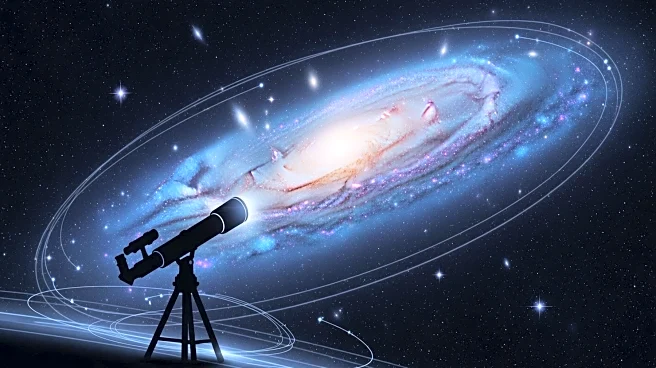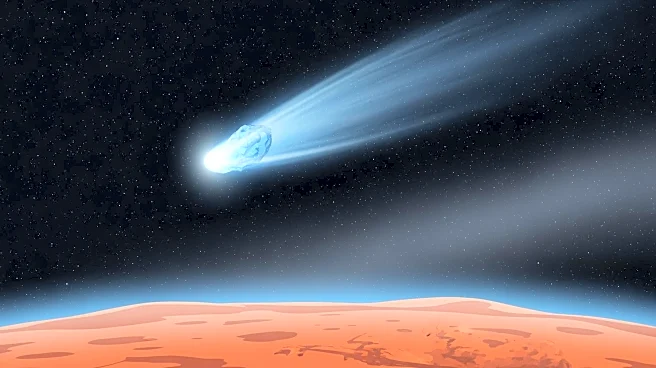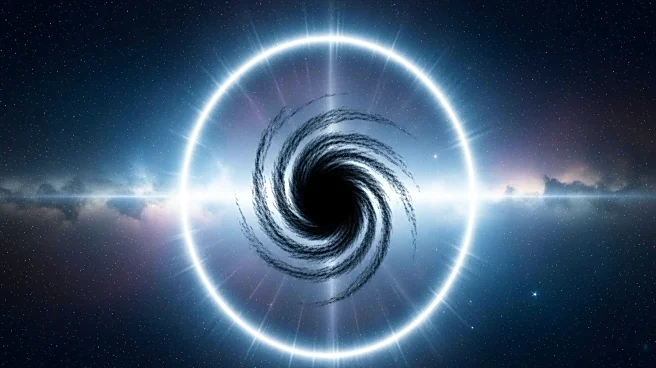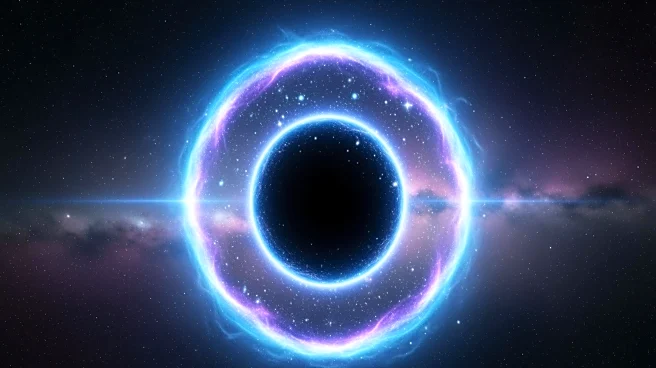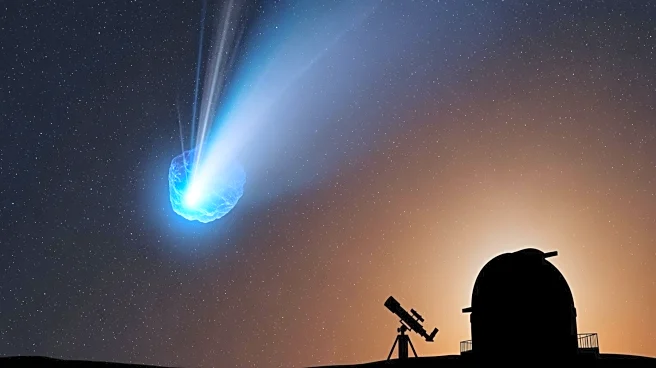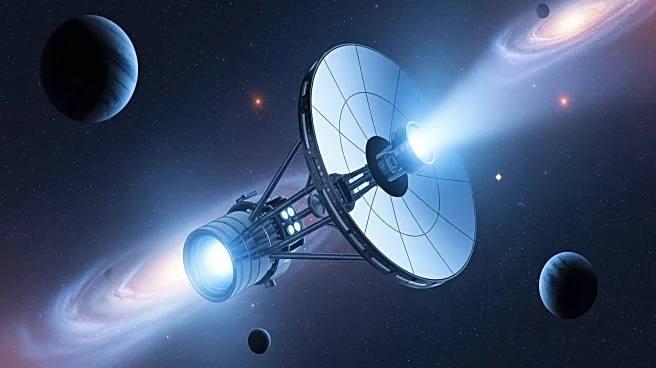What's Happening?
Tomonori Totani, a professor in the astronomy department at the University of Tokyo, has claimed to have found the first direct evidence of dark matter. Using NASA's Fermi Gamma-ray Space Telescope, Totani observed gamma rays extending in a halo-like
pattern near the center of the Milky Way galaxy. This discovery, published in the Journal of Cosmology and Astroparticle Physics, suggests that dark matter, which is thought to make up about 27% of the universe, might be detectable through its gamma-ray emissions. Totani's findings have sparked excitement and skepticism among scientists, as dark matter has traditionally been inferred through gravitational effects rather than direct observation.
Why It's Important?
The potential discovery of dark matter is significant as it could revolutionize our understanding of the universe. Dark matter is believed to play a crucial role in the formation of galaxies, stars, and planets. Confirming its existence would validate decades of theoretical physics and could lead to new insights into cosmic phenomena. However, the scientific community remains cautious, as extraordinary claims require extraordinary evidence. If Totani's findings are verified, it could lead to advancements in astrophysics and cosmology, impacting how scientists study the universe's composition and evolution.
What's Next?
Further research and independent verification are necessary to confirm Totani's claims. Scientists will likely conduct additional observations and analyses to determine the validity of the gamma-ray emissions as evidence of dark matter. If confirmed, this discovery could prompt new studies into the properties and behavior of dark matter, potentially leading to breakthroughs in understanding the universe's fundamental structure. The scientific community will closely monitor developments in this area, as the implications of confirming dark matter are profound.
